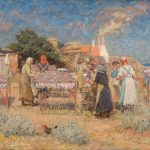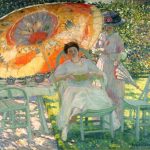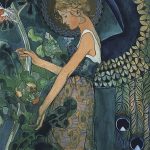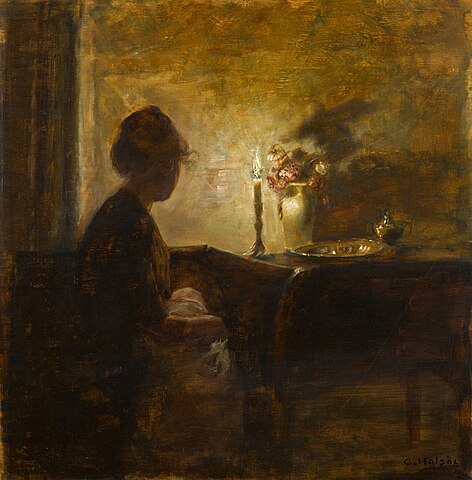
Carl Holsøe, born on March 12, 1863, in Copenhagen, Denmark, emerged as a distinguished painter renowned for his serene depictions of interior scenes. His life’s journey unfolded during a period of artistic transition in the late 19th and early 20th centuries, marked by the intersection of traditional academic training and the burgeoning Impressionist movement.
Early Artistic Foundations
Holsøe’s artistic journey began with early aspirations nurtured by his family’s supportive environment. Encouraged by his parents, he enrolled at the Royal Danish Academy of Fine Arts in Copenhagen, receiving formal training in academic painting. His studies embraced the principles of realism and meticulous attention to detail, laying the groundwork for his later works.
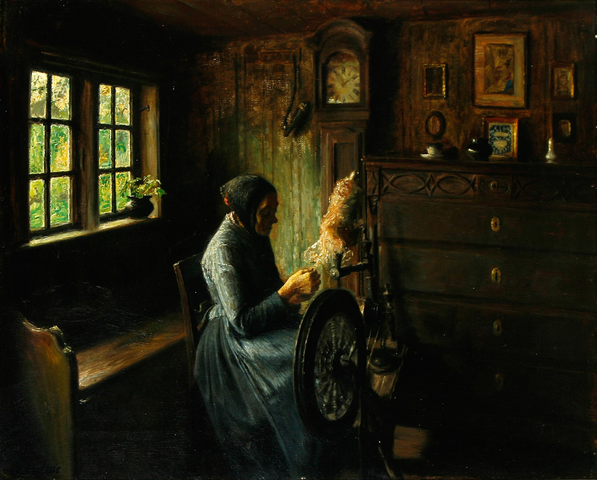
During his formative years, Holsøe’s exposure to the prevailing artistic movements of the time, including the influence of the Barbizon School and the emergence of Impressionism, sparked a transformation in his approach. Inspired by the evolving artistic landscape, he began to explore the interplay of light and shadow, setting the stage for his distinctive contributions to the world of art.
The Enchantment of Interiors
Holsøe’s mastery unfolded as he found his niche in the portrayal of interiors, particularly those illuminated by soft, diffused light. His fascination with the intimate spaces within homes became a defining theme in his work. Holsøe’s interiors, often featuring solitary figures engaged in quiet contemplation, exuded a sense of tranquility and domestic harmony.
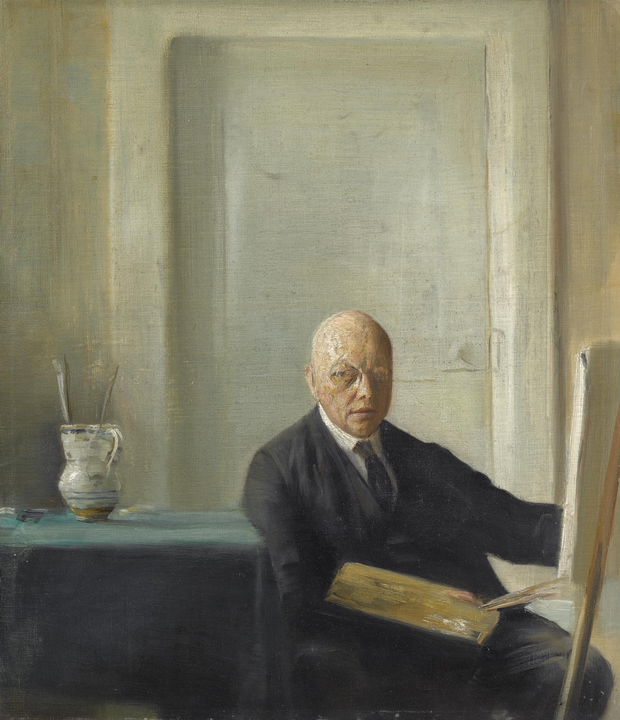
One of his notable influences was the Dutch genre painters of the 17th century, particularly Johannes Vermeer. Holsøe admired Vermeer’s ability to capture the atmospheric qualities of light within domestic settings, and this admiration manifested in his own exploration of the enchanting interplay of light in interior scenes. Through his paintings, Holsøe transported viewers into a world where every brushstroke seemed to convey the delicate nuances of a quiet moment.
Evolving Style and Impressionist Tendencies
As the 19th century gave way to the 20th, Holsøe’s style continued to evolve. While rooted in realism, he embraced certain Impressionist tendencies, particularly in his treatment of light and color. The influence of Impressionism, with its emphasis on capturing the transient effects of light, added a new layer of vibrancy to Holsøe’s interiors.
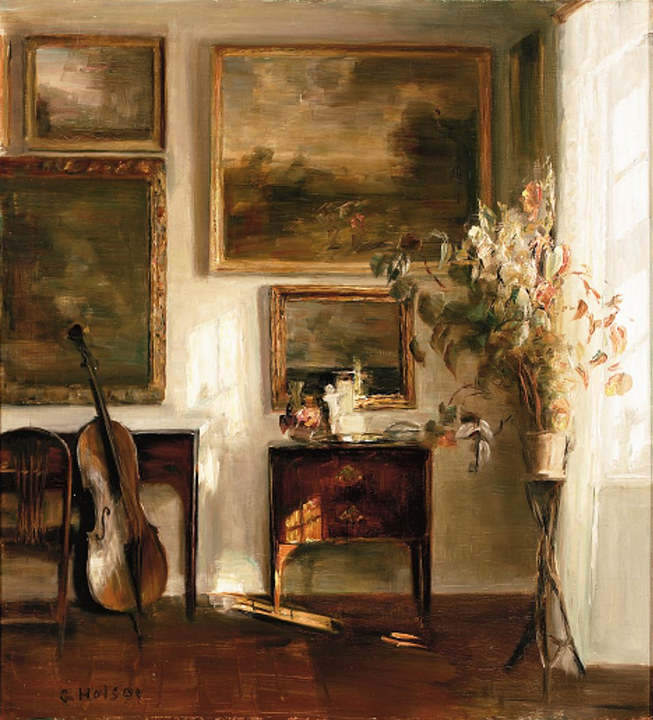
His color palette shifted towards lighter tones, and the interplay of sunlight filtering through curtains and reflecting off surfaces became a hallmark of his later works. Holsøe’s ability to infuse everyday scenes with a timeless, atmospheric quality set him apart as an artist attuned to the subtleties of visual poetry within interior spaces.
Success and Recognition
Holsøe’s dedication to his craft soon garnered recognition and success. His paintings, characterized by their refined composition and exquisite rendering of light, found favor with art collectors and enthusiasts alike. Galleries and exhibitions in Denmark and beyond featured Holsøe’s works, allowing his art to transcend national borders.
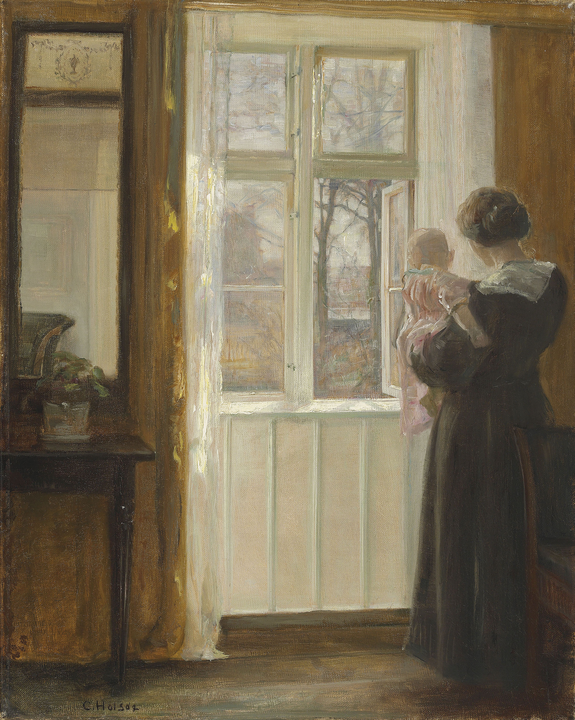
The artist’s success was not only a testament to his technical skill but also to the universal appeal of his subject matter. In an era marked by societal changes and a longing for moments of tranquility, Holsøe’s interiors resonated with viewers who found solace in the contemplative beauty of his paintings.
The Poetics of Solitude
A recurring theme in Holsøe’s oeuvre was the poetics of solitude—a quiet exploration of the beauty found in moments of introspection. His interiors often featured solitary figures engaged in simple, everyday activities, such as reading or sewing. The absence of overt narrative allowed viewers to project their own emotions and narratives onto the canvas, creating a deeply personal connection with the art.
Holsøe’s ability to convey the profound within the mundane contributed to the enduring allure of his paintings. The contemplative atmosphere of his works transcended the specifics of time and place, inviting viewers to immerse themselves in a timeless realm of quietude. Through his art, Holsøe captured not only the physical space of interiors but also the interiority of the human spirit.
Legacy and Enduring Appeal
Carl Holsøe’s legacy endures through the continued appreciation of his art. His paintings, characterized by their atmospheric richness and emotive tranquility, have found a place in major art collections and museums. Holsøe’s ability to distill the essence of serenity within interior spaces continues to resonate with contemporary audiences, attesting to the timeless quality of his artistic vision.
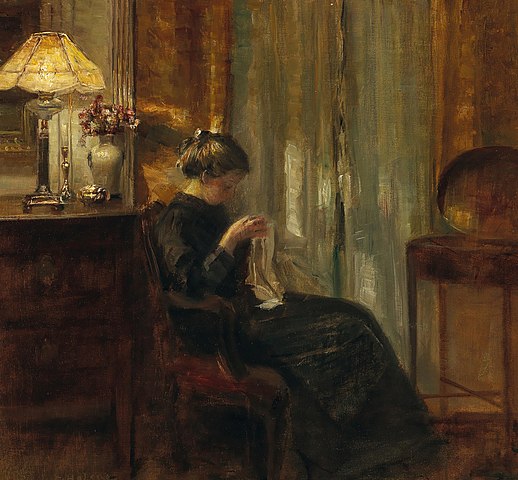
As a master of interior serenity, Holsøe’s contributions to the world of art extend beyond technical proficiency. His paintings are invitations to contemplation, offering viewers a sanctuary of quiet beauty within the realm of domesticity. Carl Holsøe’s life’s work stands as a testament to the enduring power of art to transcend temporal boundaries and evoke the universal emotions that connect us across time and cultures.


